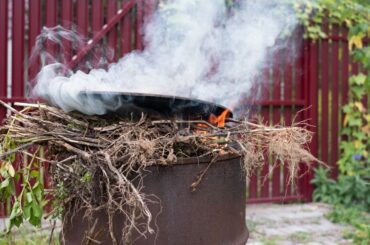In this comprehensive guide, we delve into the art of watering plants with a hose, sharing expert tips and techniques to ensure your garden thrives.

Understanding the Basics of Watering Plants with a Hose
Finding the Optimal Time
One key factor in watering plants with a hose is timing. Watering your plants early in the morning or late in the evening is ideal. This helps prevent excessive evaporation and allows your plants to absorb the moisture effectively.
Proper Water Distribution
When using a hose, it’s crucial to ensure even water distribution. A soaker hose is a great choice for this purpose, as it delivers water directly to the plant’s root zone, preventing wastage and promoting healthy growth.
Watering Frequency
The frequency of watering depends on various factors, including the plant type, soil, and weather conditions. As a general rule of thumb, it’s best to water deeply but less frequently to encourage deep root growth.
The Right Technique
Slow and Steady
When watering your plants with a hose, a slow and steady approach is essential. Avoid high-pressure streams that can damage delicate plants. Instead, use a gentle, consistent flow to ensure water penetrates the soil without causing runoff.
Water at the Base
Direct the water flow towards the base of the plant to prevent the foliage from getting wet. Wet foliage can lead to diseases, so aim for the root zone when watering.
Mulch Matters
Adding a layer of mulch around your plants helps retain soil moisture, reducing the frequency of watering. This not only conserves water but also keeps the soil temperature stable.

Customizing Your Watering Regimen
Plant-Specific Needs
Different plants have varying water requirements. Research your plant species and tailor your watering schedule to meet their specific needs. Cacti, for instance, require significantly less water than lush, leafy plants.
Soil Type
The type of soil in your garden plays a significant role in how often and how much you should water. Well-draining soil may require more frequent watering, while clay soil retains moisture for longer periods.
Watering with Conservation in Mind
Collect Rainwater
To save on water bills and minimize your environmental footprint, consider collecting rainwater in barrels or containers. Rainwater is naturally free from the chemicals found in tap water and is an excellent option for watering your plants.
Use Drip Irrigation
Drip irrigation systems are highly efficient in delivering water directly to the roots while minimizing water wastage. Consider investing in a drip irrigation setup for your garden.

Troubleshooting Common Issues
Overwatering
Overwatering can be just as detrimental to your plants as underwatering. Signs of overwatering include yellowing leaves, root rot, and a foul odor. Be vigilant and adjust your watering schedule accordingly.
Underwatering
On the other hand, underwatering can lead to wilting, stunted growth, and increased susceptibility to pests. Monitor your plants regularly to ensure they receive the right amount of moisture.
Conclusion
In conclusion, watering plants with a hose is an essential skill for any gardener. By understanding the basics, employing the right techniques, customizing your regimen, and considering water conservation, you’ll be well on your way to nurturing a thriving garden. Your garden will thank you
Read Next:

How to Use a Garden Incinerator: A Guide to Safe Outdoor Burning


